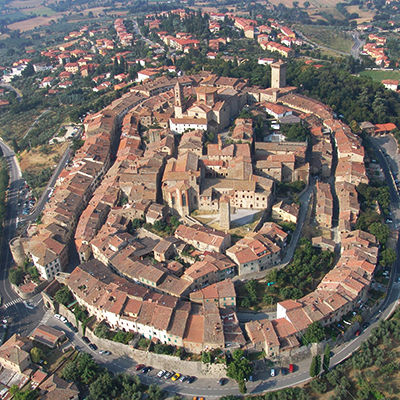Must-Try Wineries in the Area
- True Tuscany

- Aug 21, 2022
- 3 min read
From Brunello di Montalcino to Chianti Classico, & Vino Nobile di Montepulciano; these are the must-try wines of Tuscany.

While there are many types of wines in Tuscany, the most well-known include Chianti Classico, Vino Nobile di Montepulciano, and Brunello di Montalcino. The names of the wines refer to either the grape composing the wine, the region in which the grapes are grown, and usually both. For example, Chianti is made from the sangiovese grape, grown in the Chianti region. The difference in types of Chianti such as Chianti Classico, or Chianti DOCG, or Chianti Reserva depend on the percentage of sangiovese grapes used, area, technique, and time spent in the barrel and bottle before it is sold on the market. All of these variables impact the structure, taste, & price of the wine, and moreover how long you should store before consumption.
There are a variety of grapes used to make wine in Tuscany (Merlot, Cabernet Sauvignon, and Syrah), but the core of Tuscan wine is Sangiovese. This is why tasting wine in Tuscany is so fun. While most of the wines originate from the Sangiovese grape, the taste can vary drastically, and of course the time spent with each winemaker (small or large producer, organic, family owned, etc) creates a memorable experience at each winery.
Every time I travel outside of Italy, I have to say, I always miss Italian wine. Do I have other favorites around the world? Absolutely! Pinot Noir from Napa Valley, Tempranillo from Spain, and of course the famed French wines however, by the end of the trip, I am always excited to come back to Italian sangiovese. The following focuses on the core of Tuscan wines and showcases what we feel are the best of the region.
Winery Favorites
In full disclosure it was very difficult to cull this list down to six recommendations, but each one brings something different to the table. For me, wine tasting at a vineyard is not just about the wine but also about the story, the ambiance, and the winemakers. Read below for more details on why we chose these six.

Capanna is a small producer of Brunello in the SE subregion of Montalcino. The Capanna farm is family-owned and has been producing since 1966, winning many awards along the way. If you are in search of top notch, velvety smooth Brunello, this is for you.

Enoteca La Fortezza is a tasting room in the fortress of the Montalcino village. Not only can you tour the fortress and climb the towers but the tasting allows you to explore Brunellos from various subregions of Montalcino. It is a great introduction to Brunello wine and perfect for newbies wanting to learn more about the different microclimates and producers of the area. Highly recommend the tasting + lunch.

Salcheto is located at the foothills of Montepulciano and is known for their commitment to environmental sustainability. They are a newer producer (1997) that focuses on sulfate-free vintification. They are the first vineyard in the world to have certified the carbon footprint of a bottle of wine. We recommend tasting their Vino Nobile di Montepulciano and enjoying the views of the historic village on their terrace. They also offer a fantastic farm fresh lunch.

Sesta di Sopra is a very small, family-managed Brunello producer in the south subregion of Montalcino. This place tops our list not only because of the wine but also because of the passion you feel from the winemaker as he welcomes you into his home. You begin by tasting his world class Brunello in his living room as he tells you stories about the geographical uniqueness of his vineyards and family history. Their wine has won many awards from Wine Spectator and others but it's the connection you feel to his wine that is so captivating.

Avignonesi is a beautiful estate located on the border of Cortona and Montepulciano. They are a leader in biodynamic viticulture and they also conduct their own experiments like vine-training and plant density effects. While they are known for their Nobile di Montepulciano and the holy wine of Tuscany, Vin Santo, we are in love with all their wines; from their Rose to their Merlot, 50&50, and single vineyard Nobiles. Take the tour and make a reservation for their lunch + tasting. It is definitely worth the price.

Castello di Ama produces Chianti Classico in the Chianti region. The estate was once a tiny walled town in pre-Roman times and has since evolved into a vineyard and contemporary art project that works with various artists around the world. Art installations are all around the property adding to the depth and intrigue of this award winning vineyard. It is one of the more unique wineries I've been to - one that is captivating in both its wine and ambiance.



Comments